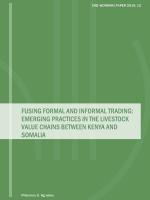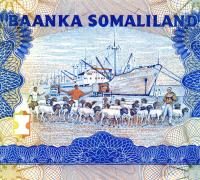Hybrid rules in livestock value chains in East Africa
Livestock trading in the Garissa corridor, which connects southern Somalia with the Kenyan capital Nairobi, constitutes a defining part of the economy in north-eastern Kenya. Based on extensive doctoral fieldwork, this DIIS Working Paper takes stock of livestock traders’ everyday trading practices. Three overlapping value chains characterize the Garissa corridor along which cattle, sheep and goats are marketed and transported; a transnational value chain, a local value chain and an export value chain. The ‘practical norms’ that govern these value chains differ considerably. As Somali livestock moves towards the Kenyan highlands, animals are gradually being formalized, becoming subject to government recording, disease surveillance and taxation. This highlights not only a fusing of informal and informal rules and economies, but points towards both the disadvantage and advantage of weak state institutions, which give traders elbow room to negotiate the terms of trading.
This DIIS Working Paper is written by Philemon O. Ng’asike (University of Nairobi)and is an output of the research program ‘Governing Economic Hubs and Flows in Somali East Africa'.The paper is editedbyTobias HagmannandFinn Stepputat.


